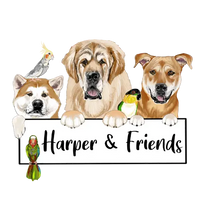Training Treats And Treats In General
Training is often treat intensive, and many of the treats advertised as Low-Calorie treats are not high value. That can make finding high-value dog training treats difficult.
Everyone loves giving their dog treats, and chews, however, the current recommendation is that treats, chews, and toppers should make up no more than 10% of daily calories so as to prevent the development of nutritional deficiencies.
For your typical 20lb adult dog that means treats, supplements, chews, and toppers should be no more than 50 calories a day.
For reference, one-quarter tablespoon of peanut butter is about 24 calories. That’s almost half of the calories right there.
Whether you feed a complete and balanced kibble, canned, raw, cooked, dehydrated, or freeze-dried food they are all or at least should be formulated to meet specific levels for all required essential nutrients. The foods are formulated to meet the needs of most pets. Whether they do or not is another issue entirely, but that's for another day.
When you give treats, chews, toppers you are deviating from the percentages. The more calories a dog gets from treats, the further away you drift from those percentages. Drifting from these percentages can potentially cause health problems in the future. Especially when done on a semi-consistent basis or if you remove food to account for the treats and chews given on a particular day.
The same reasoning applies If you are feeding a percentage-based raw diet. The more treats you give the further you deviate from those percentages.
While this is important for all dogs, it’s even more important for growing puppies.
This is also why we recommend rotating between treats. By giving a variety of treats, chews, and food toppers, you are lessening the drift. This is the main reason why our dog food toppers are not single ingredients ie chicken breast.
All of our Food toppers are made up of both muscle and organ meat from a single protein, or should you choose a mixed option such as Beef and Salmon the salmon replaces a portion of the muscle meat not the organ meat which is more nutritionally dense.
If one day you give treats from muscle meat, the next day you should give some treats that are from organ meat. You could also rotate during the day or combine a bag of treats from muscle meat with a small bag of treats from organ meat. If you give a Chicken foot one day, maybe give a salmon skin the next day. Give them a slice of your banana or a strawberry. The point is to provide a variety of different treats that provide different levels of all the essential nutrients. vitamins, minerals, fats, and amino acids.
For example Chicken Liver according to one study contains 1100 mg of Taurine per Kilogram while chicken breast only has 159 mg per Kilogram. One Kilogram of Beef Heart contains about 113.3 Mg of CoQ10 while Beef Tenderloin has 26.5 Mg. Duck Heart is higher in Vitamin E than Turkey Heart While Turkey Heart is higher in Vitamin A and Selenium. Sweet Potatoes contain more magnesium than carrots, but carrots are higher in Beta Carotene(Pro-Vitamin A) Pro-Vitmain, Vitamin C(Not Essential), and Vitamin E. Strawberries have about .35mg per 100 grams of resveratrol. In comparison, cranberries have 1.92 mg per 100 grams. These are but a few examples. The difference in vitamins, minerals, amino acids, Fat, and the often overlooked small molecule varies between different cuts or meat, as well as different plants.
Given the fact that canine obesity is on the rise; we believe that treats shouldn’t just be empty calories that provide little to no nutritional value. Ie the dog biscuit that can sit out for months on end. We believe that treats should also be nutritious and the ingredients should serve a purpose. That they should promote your pet’s health.
We do not believe in including high-calorie ingredients i.e. peanut butter, in our Dog yogurt.
Peanut Butter for Dogs
While peanut butter can be safe to give. Peanut butter is extremely calorie dense. It is also contains mostly omega 6 fatty acids. Most people are already in agreement that the omega 6 to omega 3 fatty acid ratio that we and our dogs are receiving are already to high, so adding in peanut butter just increases the ratio even further.
This is also why we don’t really make any treats that are very big, because more often than not they should be broken down into much smaller pieces. While we would all love to give a big slice of chicken breast, or insert your dogs favorite meat, as a treat it’s not really the best thing for our dogs health and well-being.
Training Treats
That is part of the reason why we made training treats. Each 4 oz bag of training treats contains around 350 individual treats. We don’t believe that you should have to break the treat up into 20 smaller pieces, and that is why our training treats are small bite-size pieces so that you don’t have to worry about breaking them into 20 smaller pieces.
We make them so small because far too often, when breaking up treats, we think that is small enough, but in reality it should probably be smaller. This can end up over time adding a significant amount of calories to the dog’s diet. They are bite sized so that they are suitable for all dogs. They are bite-sized so you can worry less about feeding too many treats on training days.
Our seven different Training Treats are single ingredient treats. So you can rotate between the different proteins. One month or day, you can use Kona’s Beef Training Treats , while the next month or day, you can use Cleo’s Turkey Training Treats
Our Training Treats do not contain any, Oats, Peanut Butter, Cane Sugar, Oatmeal, Gelatin, Rice, Potato Protein, Pea Protein, Bacon Flavor or any other similar ingredients found in a vast majority of “training treats”.
Given the caloric density of peanut butter, I don’t understand why any company would use peanut butter in treats that are being actively sold as training treats. At the end of the day, Training treats should not be including calorie-dense ingredients such as peanut butter.
Side Note
During particularly heavy training days, you might need to cut back on their regular food slightly, so they don’t get an excessive amount of calories for the day.
A note on Organ Meat and Chews
If you give too much organ meat, such as liver or kidney, you can cause GI Distress, which will often result in diarrhea. You should always limit the amount of organ meat you provide your dog on a daily basis.
This is also why our training treats are only muscle meats, as it can be easy to give too many.
On the other end of the spectrum, feeding too many chews, such as chicken feet, duck necks, duck heads, marrow bones, etc., may result in constipation. The stool may appear to be light, white, or grey.
That is why we make high-value treats made specifically for training. That is why we make them so small. So you don’t have to worry about breaking the treats into several smaller pieces. You don’t have to be as careful or worried about giving them too many treats, and you don't need to worry about causing diarrhea by giving too many freeze-dried liver treats.
When it comes to high-value dog training treats, it is important to rotate between them so they don't lose their high-valued status.


